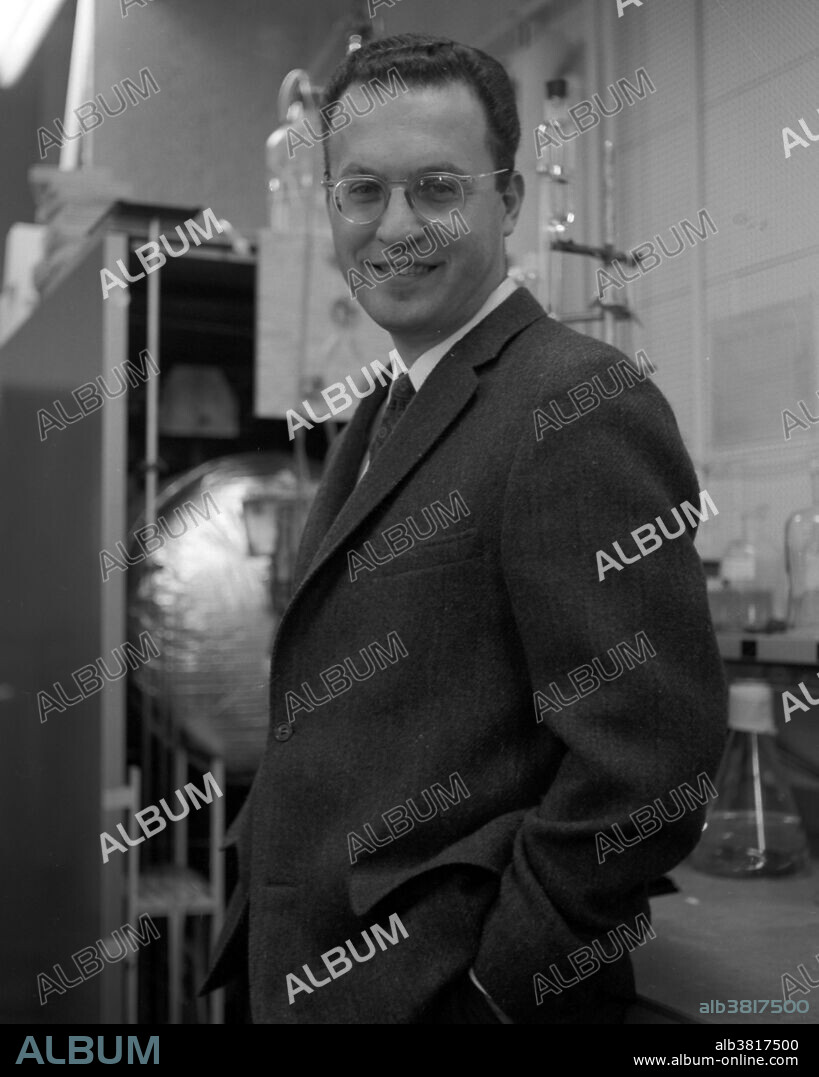alb3817500
Donald Glaser, American Physicist

|
Ajouter à une autre Lightbox |
|
Ajouter à une autre Lightbox |



Avez-vous déjà un compte? S'identifier
Vous n'avez pas de compte ? S'inscrire
Acheter cette image.
Sélectionnez l'usage:

Titre:
Donald Glaser, American Physicist
Légende:
Voir la traduction automatique
Glaser, March 20, 1963. Donald Arthur Glaser (September 21, 1926 - February 28, 2013) was an American physicist, neurobiologist, and Nobel Prize Physics laureate (1960) for his invention of the Bubble chamber used in subatomic particle physics. A bubble chamber is a vessel filled with a superheated transparent liquid (most often liquid hydrogen) used to detect electrically charged particles moving through it. After winning the Nobel Prize, Glaser began to think about switching from physics into a new field and began to study biology doing experiments with bacterial phages, bacteria mammalian cells and studying the development of cancer cells. He automated the process of pouring out agar, spreading culture, and counting colonies of cells using a machine he called the dumbwaiter. It took photographs, administered chemicals, and had a mechanical hand to pick up colonies. As molecular biology became more dependent on biochemistry, Glaser again considered changing fields and began working on computational modeling of the visual system and visual psychophysics. He died in his sleep, in 2013, at the age of 86.
Crédit:
Album / LBNL/Science Source
Autorisations:
Taille de l'image:
3600 x 4500 px | 46.3 MB
Taille d'impression:
30.5 x 38.1 cm | 12.0 x 15.0 in (300 dpi)
Mots clés:
AMÉRICAIN • ANNEES 1960 • ANNÉES 60 • ANNEES SOIXANTE • BIOLOGIE MOLECULAIRE • BIOLOGIE • BIOLOGISTE MOLECULAIRE • CÉLÈBRE • CELEBRITE • HOMME DE SCIENCE • HOMME • INVENTEUR • LAUREAT DU PRIX NOBEL • NEUROBIOLOGIE • NOBEL • PERSONNAGES • PERSONNALITÉS • PERSONNE • PRIX NOBEL • SAVANT • SCIENTIFIQUE • XXE SIECLE
 Pinterest
Pinterest Twitter
Twitter Facebook
Facebook Copier le lien
Copier le lien Email
Email
